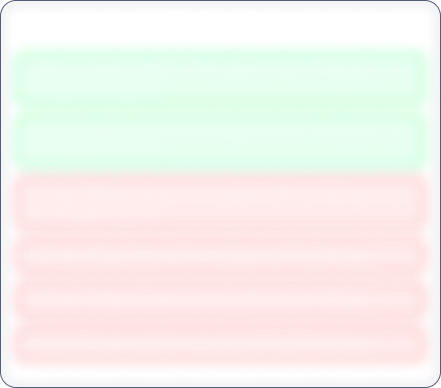Year End Sale 50% off
PNB Housing Finance

No Data Available
Investor Sentiment
PNB Housing Finance Share price and Fundamental Analysis
Key Metrics
Included In
Stock Returns
Stock Heatmap

No Stocks
Smart Score

Unlock Smart Score
See Detailed Analysis & Insights


Unlock Insights
See Detailed Analysis & Insights
Technicals
Returns Calculator
If you would have investedResearch Report
No Research Report
Corporate Action
Financials
Key Ratios
ROE
Avg ROE (3 Yrs) : NaN%
ROCE
Avg ROCE (3 Yrs) : NaN%
ROA
Avg ROA (3 Yrs) : NaN%
NPM
Avg NPM (3 Yrs) : NaN%
Dividend History
5 Year FactSheet
Documents

No Data Available
News
PNB Housing Finance Management and History
Company Management


Unlock Management Data
See Detailed Analysis & Insights
Company History
PNB Housing Finance Limited (PNB Housing) is a registered housing finance company with National Housing Bank (NHB), incorporated under the Companies Act, 1956 and commenced its operations on November 11, 1988. It is promoted by Punjab National Bank (PNB), which holds 32.57% of share capital in the Company. The Company offer retail and corporate loans, including individual home loans, retail loan against property, retail non-resident property loan, construction finance and lease rental discounting among others. It operate the sales and distribution function through the wholly-owned subsidiary, PHFL Home Loans and Services Limited.
The company has a robust network of branches spread across the country which help its customers avail financial services (loans and deposits) seamlessly.
In 2003, PNB Housing Finance was notified under the SARFAESI Act. In 2006, the company crossed the Rs 1000 crore loan portfolio. In 2009, PNB Housing Finance's promoter PNB sold 26% of its stake in the total issued, subscribed and paid-up share capital of the company to Destimoney Enterprises Private Limited (DEPL).
In 2010, PNB Housing Finance launched the business process re-engineering project, 'Kshitij'. In 2012, DEPL increased its shareholding in the company to 49%, pursuant to the conversion of Compulsory Convertible Debentures (CCDs) issued in 2009. During the year, PNB Housing Finance brought down Gross and net NPAs lower than 0.5% of its asset portfolio.
In 2013, PNB Housing Finance crossed Rs 1000 crore in retail deposits. In 2014, the company's profit after tax crossed Rs 100 crore and assets under management crossed Rs 10000 crore. In 2015, the company implemented end-to-end Enterprise System Solution. During the year, DEPL was acquired by Quality Investment Holdings (QIH) of the Carlyle Group. In October 2016, PNB Housing Finance raised Rs 3000 crore from an initial public offer. Its equity shares were listed on National Stock Exchange (NSE) and Bombay Stock Exchange (BSE) with effect from 7 November 2016. In 2016, PNB Housing Finance's assets under management crossed Rs 25000 crore.
In 2017, PNB Housing Finance's assets under management crossed Rs 50000 crore and deposits crossed Rs 10000 crore. During the year, PNB Housing Finance incorporated a subsidiary 'PHFL Home Loans & Services Ltd'.
The Board of Directors of PNB Housing Finance at its meeting held on 3 May 2018 approved to raise funds by way of External Commercial Borrowings for not exceeding USD 1 billion in one or more trenches to augment its medium-term resources subject to all regulatory approvals. On 10 July 2018, PNB Housing Finance informed the stock exchanges that it has received a joint communication from its promoter Punjab National Bank (PNB) and its second largest shareholder viz. Quality Investment Holdings (The Carlyle Group) regarding the initiation of the process for the sale of minimum 51% stake in PNB Housing Finance Limited to the potential acquirers.
During the financial year 2019, Rs. 30,858 crores was borrowed through bank term loans, National Housing Bank refinance, external commercial borrowings and public deposits. The National Housing Bank sanctioned Rs. 3,500 crores in the third quarter of fiscal 2018-19, which was fully drawn down during the fourth quarter.
The total Assets Under Management (AUM) as at March 31, 2019 were Rs. 84,722 crores. During FY 2018-19, the Company has opened 18 new branches, out of which 4 branches were opened in the existing locations and 14 branches were opened at new locations. As on March 31, 2019, the Company has presence through 102 branches, 29 outreach locations, totalling to 131 distribution outlets. During the year 209, the Company has sourced loans worth Rs. 16,494 crores for PNB Housing.
During the year 2020, the Company had opened 2 new branches. As on March 31, 2020, the Company has presence through 105 branches, 28 outreach locations, totalling to 133 distribution outlets. The assets under management (AUM) as at March 31, 2020 were Rs. 83,346 crores. During the year 200, the Company has sourced loans worth Rs. 11,326 crores for PNB Housing. It became the first HFC to sign a funding of US$75 million via External Commercial Borrowings (ECBs) from Japan International Corporation Agency (JICA).
The Assets Under Management (AUM) as at March 31, 2021 were Rs. 74,469 crores. As on March 31, 2021, the Company has presence through 94 branches, 17 outreach locations, totalling to 111 distribution outlets. The Company also has 22 underwriting hubs for credit decision making.
During the year 2022, the Company opened 24 new branches/ outreaches, majority in tier II and tier III cities to expand Unnati operations. As on March 31 2022, the Company has presence through 99 branches, 38 outreach locations, totaling to 137 distribution outlets. The Company also has 22 underwriting hubs for credit decision making. During the year, it started 24 new locations dedicated to Unnati. With emphasis on Unnati, the Company opened 3 more branches and 2 outreach centres in April 2022 resulting in a total of 29 dedicated Unnati locations by the end of April 2022.
The Assets Under Management (AUM) as at March 31, 2022 were Rs. 65,977 crore. During the year, the Company has sourced 74% of loan applications resulting into 71% of total loans disbursed by PNB Housing.
During the year 2023, the Company expanded its branch network to 189 branches/outreaches an increase from 137 branches/ outreaches as on March 31, 2022. The affordable loan segment presence was expanded to 82 branches/outreaches in more than 150 districts.
PNB Housing Finance Share Price
PNB Housing Finance share price reflects investor sentiment toward the company and is impacted by various factors such as financial performance, market trends, and economic conditions. Share price is an indicator which shows the current value of the company's shares at which buyers or sellers can transact.
PNB Housing Finance Market Cap
Market capitalization of PNB Housing Finance indicates the total value of its outstanding shares. Marketcap is calculated by multiplying share price and outstanding shares of the company. It is a helpful metric for assessing the company's size and market Valuation. It also helps investors understand how PNB Housing Finance is valued compared to its competitors.
PNB Housing Finance PE Ratio
PNB Housing Finance PE ratio helps investors understand what is the market value of each stock compared to PNB Housing Finance 's earnings. A PE ratio higher than the average industry PE could indicate an overvaluation of the stock, whereas a lower PE compared to the average industry PE could indicate an undervaluation.
PNB Housing Finance PEG Ratio
The PEG ratio of PNB Housing Finance evaluates its PE ratio in relation to its growth rate. A PEG ratio of 1 indicates a fair value, a PEG ratio of less than 1 indicates undervaluation, and a PEG ratio of more than 1 indicates overvaluation.
PNB Housing Finance ROE (Return on Equity)
Return on Equity (ROE) measures how effectively PNB Housing Finance generates profit from shareholders' equity. A higher ROE of more than 20% indicates better financial performance in terms of profitability.
PNB Housing Finance ROCE (Return on Capital Employed)
Return on Capital Employed (ROCE) evaluates the profitability of PNB Housing Finance in relation to its capital employed. In simple terms, ROCE provides insight to investors as to how well the company is utilizing the capital deployed. A high ROCE of more than 20% shows that the business is making profitable use of its capital.
PNB Housing Finance Total Debt
Total debt of PNB Housing Finance shows how much the company owes to either banks or individual creditors. In simple terms, this is the amount the company has to repay. Total debt can be a very useful metric to show the financial health of the company. Total debt more than equity is considered to be a bad sign.
PNB Housing Finance Debt to Equity Ratio
The Debt-to-Equity (DE) ratio of PNB Housing Finance compares its total debt to shareholders' equity. A higher Debt to Equity ratio could indicate higher financial risk, while a lower ratio suggests that the company is managing its debt efficiently.
PNB Housing Finance CAGR (Compound Annual Growth Rate)
CAGR shows the consistent growth rate of PNB Housing Finance over a specific period, whether it is over a month, a year, or 10 years. It is a key metric to evaluate the company’s long-term growth potential. Main metrics for which CAGR is calculated are net sales, net profit, operating profit, and stock returns.
PNB Housing Finance Technical Analysis
Technical analysis of PNB Housing Finance helps investors get an insight into when they can enter or exit the stock. Key components of PNB Housing Finance Technical Analysis include:
Support Levels (S1, S2, S3)
There are usually multiple support levels, but the main support levels for a stock are S1, S2, S3. Support levels indicate price points where stock might get support from buyers, helping the stock stop falling and rise.
Resistance Levels (R1, R2, R3)
There are usually multiple resistance levels, but the main resistance levels for a stock are R1, R2, R3. Resistance levels represent price points where PNB Housing Finance shares often struggle to rise above due to selling pressure.
PNB Housing Finance Dividends
Dividends refer to the portion of the company’s profits distributed to its shareholders. Dividends are typically paid out in cash and reflect PNB Housing Finance ’s financial health and profitability.
PNB Housing Finance Bonus Shares
Bonus shares are usually given by companies to make the stock more affordable, increase liquidity, boost investor confidence, and more.
PNB Housing Finance Stock Split
Stock split increases the number of its outstanding shares by dividing each existing share into multiple shares. When the company offers a stock split, the face value of the stock reduces in the same proportion as the split ratio.
PNB Housing Finance Financials
The financials of PNB Housing Finance provide a complete view to investors about its net sales, net profit, operating profits, expenses, and overall financial health. Investors can analyze financial data to assess the company’s stability and also understand how the company has been growing financially.
PNB Housing Finance Profit and Loss Statements
The profit and loss statement of PNB Housing Finance highlights its net sales, net profit, total expenditure, and operating profits in the current financial year. This Profit and Loss statement is crucial for evaluating the profitability and financial stability of PNB Housing Finance .
PNB Housing Finance Balance Sheet
The balance sheet presents a snapshot of PNB Housing Finance ’s assets, liabilities, and equity of shareholders, providing insights into the financials of the company.
PNB Housing Finance Cashflow Statements
Cashflow statements track the company's cash inflows and outflows over a period. It is an essential tool for understanding how well the company manages its liquidity and finances.
PNB Housing Finance Net Interest Margin (NIM)
PNB Housing Finance Net Interest Margin (NIM) tells about the profitability earned by all NBFCs and financial institutions. It represents the income generated by the bank from the difference between the interest earned on loans and the interest paid on public deposits. Net Interest Margin (NIM) is a metric that monitors the profitability generated from a bank's lending activities.
PNB Housing Finance Non-Performing Assets (NPA) Ratio
Non-Performing Assets (NPA) indicate the ratio of a bank's loans that are classified as non-performing. A lower NPA ratio reflects stronger asset quality and more effective risk management.
PNB Housing Finance Capital Adequacy Ratio (CAR)
Capital Adequacy Ratio (CAR) is a metric to measure the bank's ability to absorb losses and still remain financially stable. A higher CAR shows that the bank is financially sound and can absorb potential losses.
PNB Housing Finance Gross NPA
Gross NPA is the percentage of total non-performing loans before provisioning, while net NPA is the percentage after provisioning. Lower gross and net NPA ratios indicate better loan quality.
PNB Housing Finance Net NPA Ratio
Net NPA is the actual losses a bank has incurred due to NPA accounts. Lower the NPA, better the banks can maintain stable income from interest on loans.
PNB Housing Finance CASA Ratio
CASA ratio tells how much of a bank's total deposits are in both current and savings accounts.


